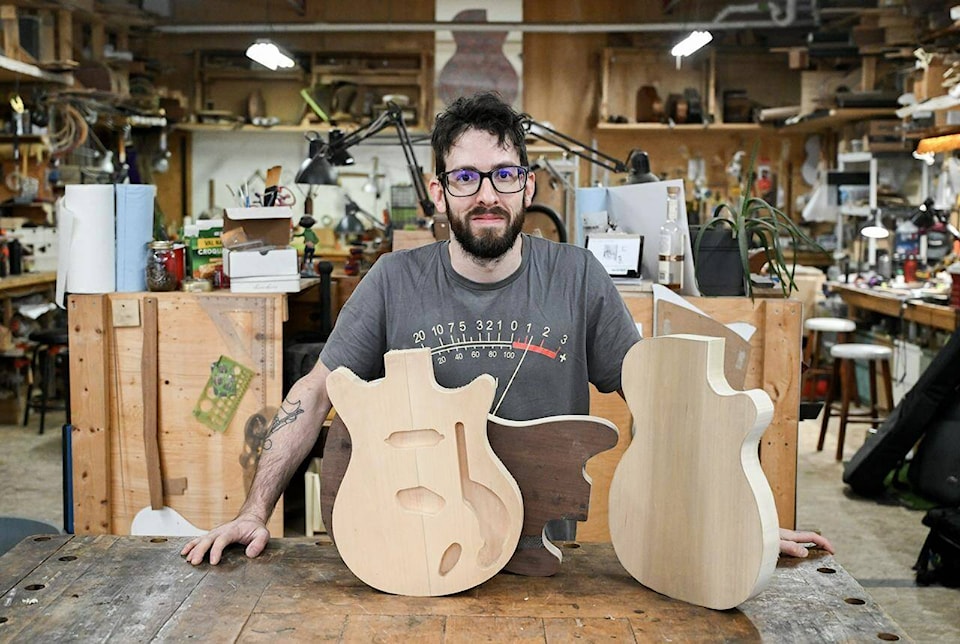In recent years, Nicolas Delisle has made new guitars from old barns, logs pulled from river bottoms and even window frames from his 1930s-era Montreal apartment.
The craftsman specializes in turning reclaimed and salvaged wood into one-of-a-kind guitars that he hand makes in the city���߲��о����s Mile End neighbourhood.
Using recycled materials is ���߲��о����part of the story of the instrument,���߲��о���� he said in a phone interview. ���߲��о����It���߲��о����s just a richer history.���߲��о����
Among the wood he has used to make guitars is old Douglas fir and pine from a barn in Ontario Mennonite country, sunken logs raised from a channel that was part of the construction of the Panama Canal, boards from an old horse barn in New York, and thick maple floorboards saved after the renovation of a concert hall that���߲��о����s home to the Boston Symphony Orchestra.
���߲��о����You could see all of the layers of varnish and the wear ���߲��о���� the pockmarks from cello pins and stuff like that,���߲��о���� he said of the concert hall wood.
He said he sources wood in different ways. In the past, that has included from a diver friend involved in river log salvage, from construction or demolition sites, and online. The wood from Panama was obtained from a company in British Columbia.
���߲��о����Sometimes it���߲��о����s friends who know somebody who knows somebody who recuperated all the church pews from their local church out in the boonies that got torn down,���߲��о���� he said. ���߲��о����I���߲��о����ve been lucky in the sense that I haven���߲��о����t had to hunt for it too hard.���߲��о����
He also made a table from wood from trees that were felled in Montreal due to an infestation of emerald ash borer, though he has not used that wood to make a guitar.
Delisle said the older wood is often full of holes and defects, and it takes a lot of work to prepare it to be used in an instrument. However, he said hundred-year-old wood is often better quality than that used in modern construction, and it helps give each instrument a unique look and sound.
But he said that���߲��о����s not the only thing that makes them individual.
While custom or semi-custom guitars are relatively common, Delisle said he uses a process that���߲��о����s more handmade and less automated than most other electric-guitar makers. Instead of using a computer-controlled machine to create the body of the guitar, he chooses to sand and machine the components himself.
As a result, Delisle produces only about 16 to 20 guitars per year ���߲��о���� a fraction of what others make.
Depending on the model, prices range from about $4,000 at the low end to about $16,000 for an all-laminate construction archtop ���߲��о���� named for its distinctive shape ���߲��о���� with a design he calls ���߲��о����pretty radical.���߲��о���� He said his guitars are played by musicians all around the world, mostly in jazz circles, including in Germany, Portugal, Japan, Australia, Thailand and the United States.
Delisle said that while guitars are instruments, they���߲��о����re also works of art in their own right, and he likens buying a guitar to buying a painting from one���߲��о����s favourite artist.
���߲��о����There���߲��о����s a personal connection that gets made between the artisan and the musician or buyer or collector that you don���߲��о����t get from just picking up a guitar off of the shelf in a music store,���߲��о���� he said.
READ ALSO:
Morgan Lowrie, The Canadian Press



